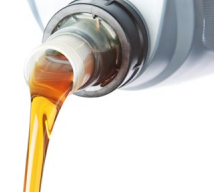Regulations, Innovative Formulations, and New Niches will Drive the Global Bio-lubricants Market
 PARSIPPANY, NJ – November 14, 2017 - Plenty of space for growth resides within the finished lubricants market, particularly within niche markets, such as bio-lubricants. Currently comprised of roughly 1% of the total finished lubricant market and driven by governmental regulations, it is expected to grow at a CAGR of 5% over the next five years, according to the latest report Opportunities in Bio-lubricants: Global Market Analysis by global market research and management consulting firm Kline.
PARSIPPANY, NJ – November 14, 2017 - Plenty of space for growth resides within the finished lubricants market, particularly within niche markets, such as bio-lubricants. Currently comprised of roughly 1% of the total finished lubricant market and driven by governmental regulations, it is expected to grow at a CAGR of 5% over the next five years, according to the latest report Opportunities in Bio-lubricants: Global Market Analysis by global market research and management consulting firm Kline.
Growth rates vary by region. Europe and South America advance at a slower pace than emerging markets in Asia. The United States is an exception, showing robust growth, driven in part by the Federal Bio-Preferred Program, along with the emerging supply of synthetic bio-based basestocks.
North America and Europe are the largest consumers of bio-lubricants because of the stringent environmental protection policies, including the Eco-label and VGP, but also due to heightened environmental awareness among end users. Together, the two regions account for nearly 80% of the global market. Asia-Pacific lags behind the two major regions but is quickly catching up with them. The markets in Asia are mirroring European and U.S. regulations, including green labels and public procurement directives. Both Japan and South Korea feature an eco-label for bio-lubricants.
The leading product category is hydraulic fluids, followed by metalworking fluids and chainsaw oils, transformer oils, gear oils, automotive engine oils, and greases. There is a new trend towards chlorine-free, non-toxic, and biodegradable additives and dedicated additive packages for green labels.
Government initiatives alongside regulations and the emergence of high performance basestocks are pushing the once niche segment to the forefront, albeit moderately. “Growth will continue to reflect individual country regulations, domestic raw material supply, and available product technology, which varies from one market to the next,” comments Sharbel Luzuriaga, the project’s manager. “With a certain degree of ‘trial and error,’ suppliers continue to explore and develop market niches. Successful product launches are subsequently scaled up and rolled out into other markets, as can be seen across Europe currently.”
The leading market players established themselves through access to unique innovative, competitive green formulations, as well as specific regional or industry regulations, such as alpine, transformer, or forestry or through the aftermarket of “green” OEMs. Examples include di-electric fluids (Cargill), metalworking (Houghton), marine (Vickers), railroad (Bechem), tunnel driving (Condat), and mountain equipment (York).
Panolin and Fuchs are the leading suppliers of finished bio-lubricants worldwide, driven by their bio-lubricant range and focus, global reach, and OEM partnerships.
“Regulation can be a prelude to growth, with an incentive for blenders to develop relevant products and customer interest, especially when mineral lubricants continue to have significant cost advantages over bio-lubricants. However, regulation by itself, without the relevant enforcement, attractive product offerings in terms of price and performance and dedication, will not drive the sector,” adds Luzuriaga, who will be hosting a WEBINAR covering key insights on the bio-lubricants market on Wednesday, November 15, 2017 at 9:00 AM EST. Please click here to REGISTER.
About Kline & Company
Kline is a worldwide consulting and research firm dedicated to providing the kind of insight and knowledge that helps companies find a clear path to success. The firm has served the management consulting and market research needs of organizations in the agrochemicals, chemicals, materials, energy, life sciences, and consumer products industries for over 50 years. For more information, visit www.KlineGroup.com.
